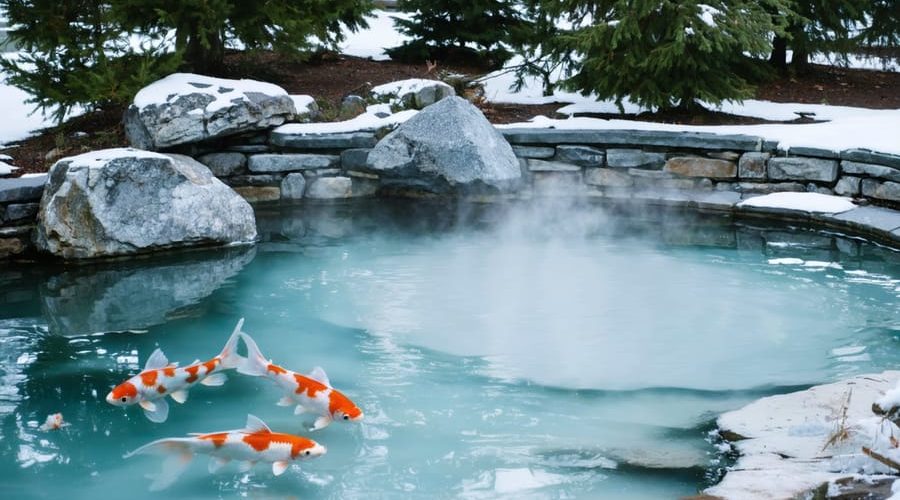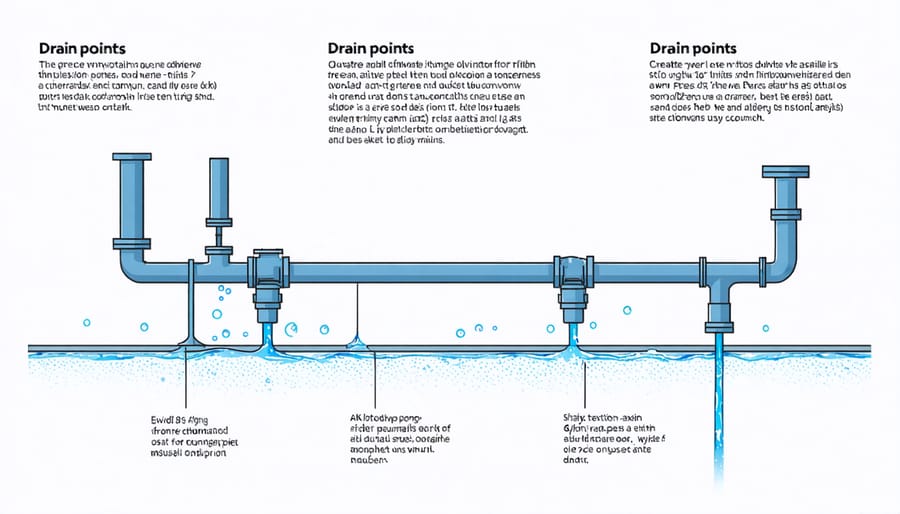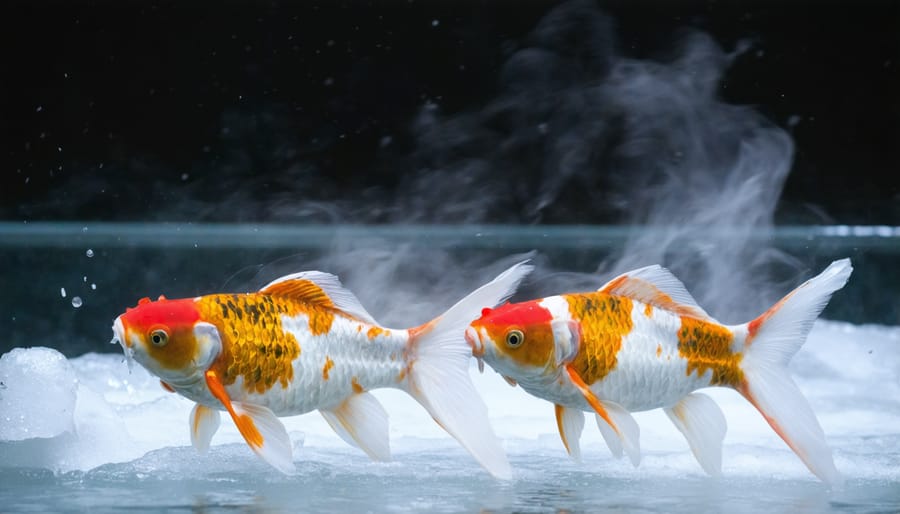
Protect Your Pond: Simple Steps to Winter-Proof Your Water Features
As winter’s chill approaches, protecting your pond ecosystem becomes crucial for maintaining its health and vitality through the freezing months ahead. The winterization process transforms your water feature from a delicate summer oasis into a resilient winter sanctuary, safeguarding both your investment and the aquatic life that calls it home.
Proper winterization involves more than simply covering your pond or removing equipment. It’s a systematic approach that addresses water chemistry, equipment protection, and the specific needs of fish and plants during dormancy. When done correctly, this seasonal preparation prevents costly damage to pumps and filters, protects fish from temperature shock, and ensures your pond emerges vibrant and healthy in spring.
Whether you’re a first-time pond owner or a seasoned enthusiast, understanding the essential steps of winterization helps create a sustainable winter environment that benefits both the structural elements of your pond and its living inhabitants. From adjusting feeding schedules to installing ice prevention systems, each action plays a vital role in your pond’s winter survival strategy.
This comprehensive guide will walk you through the critical steps of pond winterization, helping you create a winter-ready water feature that maintains its beauty and ecological balance throughout the coldest months.
When to Start Your Winter Prep
Timing your winter prep right can make all the difference in protecting your pond through the cold season. As a general rule, you’ll want to start your winterization process when water temperatures consistently drop to around 50°F (10°C), typically a few weeks before your first expected frost.
For those in northern regions (zones 3-5), this usually means beginning preparations in early to mid-September. If you’re in the middle states (zones 6-7), you can typically wait until late September or early October. Southern pond owners (zones 8-10) might not need to start until November, though they should still monitor water temperatures closely.
Keep an eye on your local weather patterns and forecasts. It’s better to start a bit early than to be caught off guard by an unexpected cold snap. A pond thermometer is your best friend during this transition period – check it regularly as temperatures begin to drop in your area.
Watch for these key signs that it’s time to start:
– Leaves beginning to change color and fall
– Night temperatures regularly dipping below 50°F
– Fish becoming less active
– Plant growth slowing down
Don’t rush the process – plan to spend a few weekends getting everything ready. This gives you time to work methodically and ensures you don’t miss any crucial steps. If you live in an area with unpredictable weather patterns, having a quick-action plan ready for sudden temperature drops is wise.
Essential Pond Clean-Up Steps

Remove Debris and Trim Plants
Start by removing fallen leaves, twigs, and other debris from your pond using a pond net or skimmer. This prevents organic matter from decomposing at the bottom and affecting water quality during winter. Pay special attention to removing any floating debris that could sink and create problems later.
When it comes to preparing aquatic plants for winter, trim back your marginal and bog plants to about 2-3 inches above the water level. Remove dead or yellowing foliage from water lilies and cut back their stems close to the crown. For submerged plants like anacharis or hornwort, leave them in place as they’ll help oxygenate the water during winter.
If you have tropical floating plants like water hyacinth or water lettuce, consider bringing them indoors or treating them as annuals, as they won’t survive freezing temperatures. Hardy varieties can remain in deeper water zones where they naturally go dormant. Remember to remove any plant debris from the water surface to maintain good water circulation and prevent ice dams from forming.
Final Water Quality Check
Before shutting down your pond for winter, it’s crucial to maintain proper water chemistry. Test your water using a reliable test kit, paying special attention to pH levels (aim for 7.0-7.4), ammonia (should be 0 ppm), and nitrates (below 20 ppm). These parameters will help ensure your fish and dormant plants survive the cold months ahead.
Add a water conditioner to neutralize any heavy metals or chlorine present in the water. If you’ve recently topped up the pond, this step is particularly important. Check the water’s KH (carbonate hardness) level as well – maintaining it between 120-180 ppm will help stabilize pH throughout winter.
Clear any remaining debris and perform a final water change of about 15-20% if needed. This gives your pond the best possible start for winter, reducing the likelihood of water quality issues when spring arrives. Remember to make notes of your final readings – they’ll serve as valuable reference points when you reopen your pond in spring.
Protecting Your Pond Equipment
Pump and Filter Care
Proper pond pump maintenance during winterization is crucial for extending the life of your circulation equipment. Start by removing the pump from your pond, being careful to disconnect all power sources first. Give it a thorough cleaning with a gentle brush and clean water to remove any debris or buildup.
If you live in an area where temperatures drop below freezing, store your pump in a frost-free location like a garage or basement. Before storage, drain all water from the pump and filter system to prevent freeze damage. For submersible pumps, you can submerge them in a bucket of water and keep them in your garage – this helps maintain the seals and prevents them from drying out.
For external filters, remove all filter media and clean them thoroughly. Store the media in a solution of pond water and beneficial bacteria to preserve the biological filtration for spring. Make sure to drain all water from filter housings and remove any drain plugs.
Don’t forget to inspect all tubing and connections for wear and tear. Mark any parts that might need replacement in spring. If possible, store flexible tubing indoors to prevent cracking from cold temperatures. A little extra care during winterization can save you significant time and money when reopening your pond in spring.

Plumbing Protection
Protecting your pond’s plumbing system from winter damage is crucial for maintaining your water feature’s longevity. Start by locating all pipes, pumps, and filtration equipment. Remove any pumps and filters that can be disconnected, clean them thoroughly, and store them in a frost-free location like a garage or basement.
For pipes that can’t be removed, proper drainage is essential. Turn off the main water supply and open all valves to drain water completely. Use a wet vacuum to remove any remaining water in the lines, as even small amounts can cause pipes to crack when frozen.
Consider installing insulation sleeves around exposed pipes that must remain in place. Foam pipe covers work well and are readily available at hardware stores. Pay special attention to areas where pipes enter or exit the ground, as these spots are particularly vulnerable to freezing.
For submersible pumps that need to stay in the pond, lower them to the deepest part where water is less likely to freeze. If you’re using a waterfall or stream feature, it’s best to shut it down completely to prevent ice damage to the plumbing and structure.
Remember to store all removed equipment in a dry place and label connections to make spring setup easier. Taking these preventive measures now will save you costly repairs when warmer weather returns.
Fish and Wildlife Care
Fish Preparation
As winter approaches, caring for pond fish requires special attention to ensure their survival during the cold months. Start by gradually reducing feeding when water temperatures drop below 50°F (10°C). Fish naturally slow down their metabolism and eat less during this time, so overfeeding can lead to health problems.
Monitor your fish’s behavior and adjust their diet to wheat germ-based foods, which are easier to digest in cold temperatures. Stop feeding completely when temperatures fall below 39°F (4°C), as fish enter a state of dormancy.
Ensure your pond maintains a deep area of at least 2 feet where fish can overwinter. This deeper zone stays warmer and provides a stable environment during freezing conditions. Keep an eye on oxygen levels by maintaining a small opening in the ice using a floating de-icer or aerator.
Don’t break ice directly above where fish are resting, as the shock waves can stress them. Instead, place a pot of hot water on the ice to melt a hole gently if needed. These simple steps will help your finned friends survive until spring arrives.
Creating Wildlife Access
During winter, local wildlife depends on accessible water sources for survival. Create safe drinking spots by maintaining a small area of open water using a floating de-icer or pond heater. These devices prevent complete freezing and provide essential water access for birds, deer, and other animals.
Consider installing a gentle slope or ramp near the water’s edge to help animals safely reach the water without slipping on icy surfaces. Natural materials like stones or branches work well for this purpose. Keep snow cleared from these access points throughout winter.
If you have a waterfall or stream feature, try to keep a portion running at a reduced flow. The movement helps prevent total freezing while creating attractive drinking spots for wildlife. However, ensure the water flow isn’t so strong that it creates dangerous ice buildup.
Place bird baths or shallow water dishes near your pond, keeping them clean and ice-free. Position these alternatives near natural cover like shrubs or trees, where animals feel safe while drinking. Remember to check and maintain these water sources regularly throughout the winter months.
Remember, supporting local wildlife during winter not only helps their survival but also adds natural charm to your winter garden landscape.

Ice Management Strategies
Managing ice formation during winter is crucial for protecting your pond and its inhabitants. The key is to prevent a complete freeze-over while maintaining a healthy environment. One effective method is using a pond de-icer, which keeps a small area of water open for gas exchange. Place the de-icer in the shallowest part of the pond, as warm water naturally rises to the surface.
Never break ice by hitting it directly – this can harm fish and damage your pond liner. Instead, create a breathing hole by carefully setting a pot of hot water on the ice surface and letting it melt through naturally. Once the hole is created, remove any excess ice chunks to prevent them from refreezing and closing the opening.
A floating pond ball can help prevent complete ice coverage by moving with the wind and keeping a small area in motion. Similarly, a small pump placed near the surface can maintain water movement, reducing ice formation. Just ensure it’s not so powerful that it creates too much turbulence, which could stress hibernating fish.
For those in milder climates, a simple DIY solution involves placing straw bales or foam blocks around the pond’s edge to insulate against freezing. Remember to remove any snow accumulation from the ice surface – while a light dusting can provide insulation, heavy snow can block vital light penetration and affect the pond’s oxygen levels.
Always maintain at least one open spot in the ice to allow toxic gases to escape and oxygen to enter. This is especially important if you have fish or other aquatic life in your pond.
Successfully winterizing your pond is essential for maintaining a healthy ecosystem year after year. Remember to clean thoroughly, protect your equipment, and adjust your feeding schedule as temperatures drop. Keep an eye on water chemistry and ensure proper coverage with netting before leaves begin to fall. If you’re overwintering fish, maintain a small opening in the ice for gas exchange, and consider using a de-icer in harsh climates. Regular maintenance checks throughout winter will help catch any issues early. By following these steps and staying proactive with seasonal care, you’ll ensure your pond emerges vibrant and healthy when spring arrives. Make winterization part of your annual pond maintenance routine, and you’ll enjoy your water feature for many years to come.
